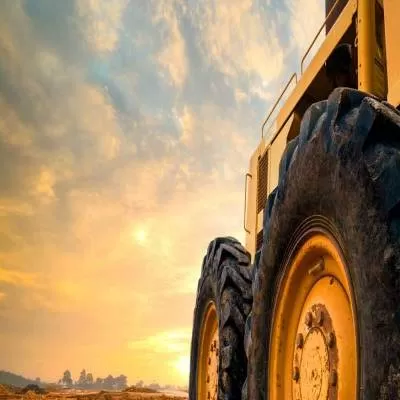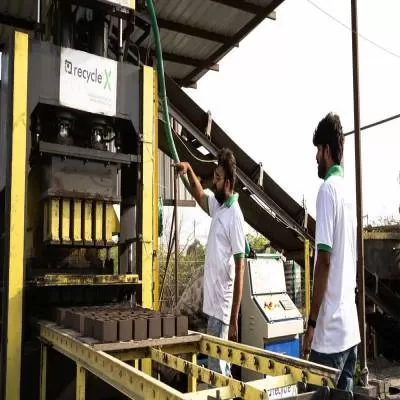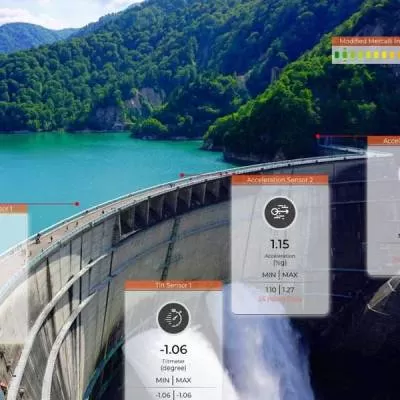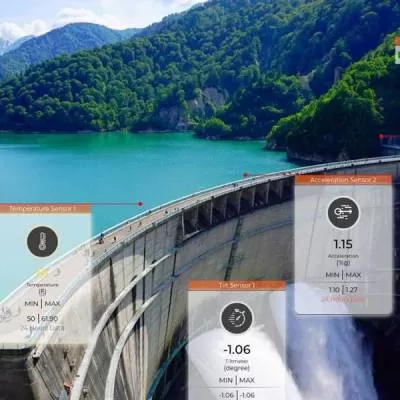- Home
- Technology
- Open to Technology
Open to Technology
In keeping with increasing expectations from buildings, fenestration innovations and options have developed by leaps and bounds, discovers Charu Bahri.
One look at real-estate in today's urban space is enough to convince you that India has taken a leap in fenestration product technology. Doors and windows used to be mere pieces of timber made to fill apertures in walls and entrances. But now, they play a key role in enhancing the aesthetics of buildings from afar as well as helping to restrict heat transfer and energy loss in commercial and residential air-conditioned spaces.
Alternate profiles
Modern windows come in myriad shapes and sizes. Tiny openings in the building shell have given way to windows stretching from floor to ceiling and spanning balconies. Newer window technologies and materials are facilitating these changes in building design. Timber and aluminium frames, for instance, are now being usurped by UPVC or un-plasticised polyvinyl chloride frames. "Earlier, buildings were not constructed keeping in mind expansion in the size of doors and windows in summers, erosion during the monsoons and exposure to UV radiation," explains Sandeep Mathur, Business Head, Fenesta. "UPVC windows have changed all that and minimised such complications. Moreover, materials like UPVC are low-maintenance, come in a wide range of colours and do away with the need to paint window and door frames."
Rajeeb Dash, Head – Marketing, Tata Housing Development Company Ltd, is of the opinion that the use of alternate materials such as UPVC and aluminium instead of traditional wood not only furthers green initiatives but reduces costs in the long run. "They are efficient and sustainable, especially in contemporary air-conditioned buildings," he says. "We aim to provide ambient indoor conditions in the homes we offer and, to that end, we place great emphasis on the material windows are made of. As 37 per cent of interior energy loss is through fenestration, window profiles made of low thermal conductive material go a long way in reducing the loss of energy. PVC has a thermal conductivity of 0.14 kcal/m.hr ° C, that is, 1/1250 that of aluminium (175 kcal/m.hr ° C). PVC windows may be designed with multi chambers and tight seals to further reduce transfer of heat and noise penetration (offer average sound separation of 22-25 dB in single glazing and 30 dB in double-glazing). Our window profiles are designed to save up to 30 to 35 per cent electricity."
According to Rupesh Baid, Principal Architect, And Design Co, "The willingness of vendors to cater to custom sizes and colours works in favour of modern fenestration technologies such as UPVC and aluminium. Also, it helps that there is a large market populated by suppliers offering branded and unbranded products of various qualities and thickness. You can find a supplier offering aluminium windows at anywhere between Rs 500 and Rs 3,000 per sq ft and, likewise, UPVC windows for Rs 300 to Rs 2,000 per sq ft. All said and done, UPVC is eco-friendly as well as cheaper than timber and faster and easier to install."
Market movements
Jayant Surana, Manager – Business Development, Plasopan Engineers India Pvt Ltd, expects the market for UPVC doors and windows to significantly widen, driven by the increasing awareness about green buildings. "The first ever Energy Conservation Building Code (ECBC) issued by the Bureau of Energy Efficiency (BEE) applies to the building envelope, HVAC, service hot water heating and pumping, interior and exterior lighting, and electrical power and motors," he observes. "ECBC recommends the use of energy saving, low u value UPVC windows. UPVC windows also help earn credits in the IGBC LEED rating of buildings. Such norms clearly favour the UPVC industry."
And Mario Schmidt, Director, Lingel Windows & Doors Tech (P) Ltd, says, "The Indian window market is currently worth about Rs 6,000 crore. Of this, UPVC windows have garnered about 5 to 6 per cent of the market share." Schmidt expects the demand for UPVC window systems to rise for new constructions as well as repair jobs as windows are increasingly seen as the single most important area in the envelope of the building to prevent energy loss.
Other initiatives are spurring the industry forward. The UPVC Window & Door Manufacturers Association (UWDMA) is in the process of submitting an India-centric draft standard to the BIS. Further, the BEE, Ministry of Power, Government of India, is in the process of setting up Thermal Performance Centres for whole window testing at Centre for Environment Planning & Technology, Ahmedabad and Jadhavpur University, West Bengal. Schmidt believes this will pave the way for energy star-rated windows and other fenestration products in India.
Made for India
A European case-study, Potential to Save Energy through use of Modern Window Systems in Europe, commissioned by the European PVC Window Profile and Related Building Products Association together with PVCplus Kommunikations GmbH, shows that replacing energy-inefficient windows with energy efficient UPVC windows would help the continent meet the emission norms of greenhouse gases set according to the Kyoto Protocol sooner even if energy consumption in other areas is not addressed. Not surprisingly, the study also showed that PVC has gained over 40 per cent of the market share in Europe. In a bid to drive the uptake of new building materials, some companies are intensely focused on maximising the performance of their product by adjusting the composite blend to suit Indian climatic conditions (see box). As Mathur explains, "Fenesta's UPVC blend is made keeping in mind hard Indian conditions. India receives among the highest UV radiations in the world, more than twice that of China and five times that of Europe. That's why Fenesta's UPVC blend is adequately reinforced with titanium dioxide to ensure that the colour of profiles does not fade under heavy UV radiation, impact modifiers to enable them to take heavy loads, and heat stabilisers to withstand the high temperatures observed across the country."
The value-adds
Product companies also offer handy add-ons like sliders, casements, tilt and turn, bays, combinations and arches, sills etc. Unlike conventional windows, Fenesta windows can be fortified with monsoon stoppers to ensure rainwater does not seep indoors and hurricane bars to withstand high-speed winds without any rattling. Double sealing, welded frames and multiple point locks also help seal out noise and dust. "The weep hole and weather stripping at the meeting rail provides maximum seal and renders the windows water-resistant," says Dash. "Hence, UPVC window profiles absorb less than 0.1 per cent water and their pore-free surface is equally resistant to dirt."
According to Schmidt, "Tilt-turn profiles help adapt window and patio door units to make the most of limited spaces. Slide and fold type profiles also help maximise window openings while lift and slide styled profiles are suitable for huge
window panels and heavy glass fittings. These profiles are complemented by entrance door security hardware to help secure openings."
The selection of glass also has an impact on the performance of the window. Schmidt points out that modern window systems can be single, double, or even triple glazed, with air, gas or vacuum between the glazing using EPDM rub-ber/flexible PVC double gaskets for air-water tightness. Glass may be simple float, tampered/toughened or security glass with spectrally selective or low emission coatings.
PVC materials are naturally flame retardant and hence do not cause, support or enhance the natural development of fire. Unlike timber windows, PVC sections are self-extinguishing. When well designed, they can withstand extended exposure to extreme weather conditions without corroding, warping, etc. "Our profiles are uniquely designed and specially formulated to have an impact resistance of 3 kg, 1 m in height at 23° C," adds Dash.
Evidently, the right door and window profiles can do a lot to enhance the appearance and function of buildings. It's an open and shut case!
- Construction
- Update
- Portal
- Magazine
- CW-India
- June
- 2011
- India
- real estate
- fenestration
- window technologies
- Timber
- aluminium
- UPVC
- erosion
- Sandeep Mathur
- Rajeeb Dash
- Fenesta
- Tata Housing Development Company Ltd
- PVC
- electricity
- Rupesh Baid
- Jayant Surana
- Plasopan Engineers India Pvt Ltd
- ECBC
- BEE
- IGBC LEED rating
- Mario Schmidt
- Lingel Windows & Doors Tech Pvt Ltd
- UWDMA
- Kyoto Protocol
- China
- Europe
- EPDM
In keeping with increasing expectations from buildings, fenestration innovations and options have developed by leaps and bounds, discovers Charu Bahri. One look at real-estate in today's urban space is enough to convince you that India has taken a leap in fenestration product technology. Doors and windows used to be mere pieces of timber made to fill apertures in walls and entrances. But now, they play a key role in enhancing the aesthetics of buildings from afar as well as helping to restrict heat transfer and energy loss in commercial and residential air-conditioned spaces. Alternate profiles Modern windows come in myriad shapes and sizes. Tiny openings in the building shell have given way to windows stretching from floor to ceiling and spanning balconies. Newer window technologies and materials are facilitating these changes in building design. Timber and aluminium frames, for instance, are now being usurped by UPVC or un-plasticised polyvinyl chloride frames. Earlier, buildings were not constructed keeping in mind expansion in the size of doors and windows in summers, erosion during the monsoons and exposure to UV radiation, explains Sandeep Mathur, Business Head, Fenesta. UPVC windows have changed all that and minimised such complications. Moreover, materials like UPVC are low-maintenance, come in a wide range of colours and do away with the need to paint window and door frames. Rajeeb Dash, Head – Marketing, Tata Housing Development Company Ltd, is of the opinion that the use of alternate materials such as UPVC and aluminium instead of traditional wood not only furthers green initiatives but reduces costs in the long run. They are efficient and sustainable, especially in contemporary air-conditioned buildings, he says. We aim to provide ambient indoor conditions in the homes we offer and, to that end, we place great emphasis on the material windows are made of. As 37 per cent of interior energy loss is through fenestration, window profiles made of low thermal conductive material go a long way in reducing the loss of energy. PVC has a thermal conductivity of 0.14 kcal/m.hr ° C, that is, 1/1250 that of aluminium (175 kcal/m.hr ° C). PVC windows may be designed with multi chambers and tight seals to further reduce transfer of heat and noise penetration (offer average sound separation of 22-25 dB in single glazing and 30 dB in double-glazing). Our window profiles are designed to save up to 30 to 35 per cent electricity. According to Rupesh Baid, Principal Architect, And Design Co, The willingness of vendors to cater to custom sizes and colours works in favour of modern fenestration technologies such as UPVC and aluminium. Also, it helps that there is a large market populated by suppliers offering branded and unbranded products of various qualities and thickness. You can find a supplier offering aluminium windows at anywhere between Rs 500 and Rs 3,000 per sq ft and, likewise, UPVC windows for Rs 300 to Rs 2,000 per sq ft. All said and done, UPVC is eco-friendly as well as cheaper than timber and faster and easier to install. Market movements Jayant Surana, Manager – Business Development, Plasopan Engineers India Pvt Ltd, expects the market for UPVC doors and windows to significantly widen, driven by the increasing awareness about green buildings. The first ever Energy Conservation Building Code (ECBC) issued by the Bureau of Energy Efficiency (BEE) applies to the building envelope, HVAC, service hot water heating and pumping, interior and exterior lighting, and electrical power and motors, he observes. ECBC recommends the use of energy saving, low u value UPVC windows. UPVC windows also help earn credits in the IGBC LEED rating of buildings. Such norms clearly favour the UPVC industry. And Mario Schmidt, Director, Lingel Windows & Doors Tech (P) Ltd, says, The Indian window market is currently worth about Rs 6,000 crore. Of this, UPVC windows have garnered about 5 to 6 per cent of the market share. Schmidt expects the demand for UPVC window systems to rise for new constructions as well as repair jobs as windows are increasingly seen as the single most important area in the envelope of the building to prevent energy loss. Other initiatives are spurring the industry forward. The UPVC Window & Door Manufacturers Association (UWDMA) is in the process of submitting an India-centric draft standard to the BIS. Further, the BEE, Ministry of Power, Government of India, is in the process of setting up Thermal Performance Centres for whole window testing at Centre for Environment Planning & Technology, Ahmedabad and Jadhavpur University, West Bengal. Schmidt believes this will pave the way for energy star-rated windows and other fenestration products in India. Made for India A European case-study, Potential to Save Energy through use of Modern Window Systems in Europe, commissioned by the European PVC Window Profile and Related Building Products Association together with PVCplus Kommunikations GmbH, shows that replacing energy-inefficient windows with energy efficient UPVC windows would help the continent meet the emission norms of greenhouse gases set according to the Kyoto Protocol sooner even if energy consumption in other areas is not addressed. Not surprisingly, the study also showed that PVC has gained over 40 per cent of the market share in Europe. In a bid to drive the uptake of new building materials, some companies are intensely focused on maximising the performance of their product by adjusting the composite blend to suit Indian climatic conditions (see box). As Mathur explains, Fenesta's UPVC blend is made keeping in mind hard Indian conditions. India receives among the highest UV radiations in the world, more than twice that of China and five times that of Europe. That's why Fenesta's UPVC blend is adequately reinforced with titanium dioxide to ensure that the colour of profiles does not fade under heavy UV radiation, impact modifiers to enable them to take heavy loads, and heat stabilisers to withstand the high temperatures observed across the country. The value-adds Product companies also offer handy add-ons like sliders, casements, tilt and turn, bays, combinations and arches, sills etc. Unlike conventional windows, Fenesta windows can be fortified with monsoon stoppers to ensure rainwater does not seep indoors and hurricane bars to withstand high-speed winds without any rattling. Double sealing, welded frames and multiple point locks also help seal out noise and dust. The weep hole and weather stripping at the meeting rail provides maximum seal and renders the windows water-resistant, says Dash. Hence, UPVC window profiles absorb less than 0.1 per cent water and their pore-free surface is equally resistant to dirt. According to Schmidt, Tilt-turn profiles help adapt window and patio door units to make the most of limited spaces. Slide and fold type profiles also help maximise window openings while lift and slide styled profiles are suitable for huge window panels and heavy glass fittings. These profiles are complemented by entrance door security hardware to help secure openings. The selection of glass also has an impact on the performance of the window. Schmidt points out that modern window systems can be single, double, or even triple glazed, with air, gas or vacuum between the glazing using EPDM rub-ber/flexible PVC double gaskets for air-water tightness. Glass may be simple float, tampered/toughened or security glass with spectrally selective or low emission coatings. PVC materials are naturally flame retardant and hence do not cause, support or enhance the natural development of fire. Unlike timber windows, PVC sections are self-extinguishing. When well designed, they can withstand extended exposure to extreme weather conditions without corroding, warping, etc. Our profiles are uniquely designed and specially formulated to have an impact resistance of 3 kg, 1 m in height at 23° C, adds Dash. Evidently, the right door and window profiles can do a lot to enhance the appearance and function of buildings. It's an open and shut case!























